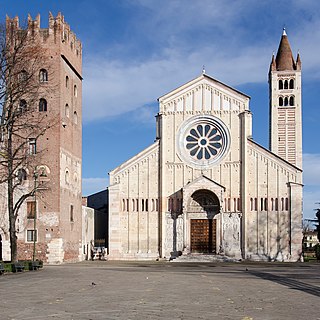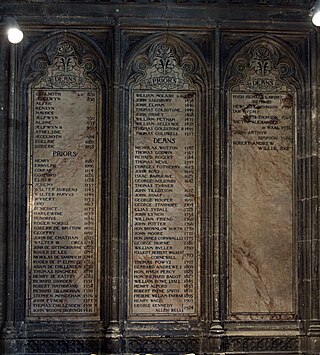
Romanesque architecture is an architectural style of medieval Europe that was predominant in the 11th and 12th centuries. The style eventually developed into the Gothic style with the shape of the arches providing a simple distinction: the Romanesque is characterized by semicircular arches, while the Gothic is marked by the pointed arches. The Romanesque emerged nearly simultaneously in multiple countries ; its examples can be found across the continent, making it the first pan-European architectural style since Imperial Roman architecture. Similarly to Gothic, the name of the style was transferred onto the contemporary Romanesque art.

The Basilica di San Zeno is a minor basilica of Verona, northern Italy constructed between 967 and 1398 AD. Its fame rests partly on its Romanesque architecture and partly upon the tradition that its crypt was the place of the marriage of Shakespeare's Romeo and Juliet. It stands adjacent to a Benedictine abbey, both dedicated to St Zeno of Verona.

The prior of Christ Church served in Christ Church Cathedral Priory in Canterbury, attached to Canterbury Cathedral.
Events from the 1170s in England.
Diotisalvi, also Deotisalvi or Deustesalvet, was an architect from Pisa, Italy, active in the 12th century in Pisa. Little is known of him.
William of Canterbury (floruit 1170–1177) was a medieval English monk and biographer of Thomas Becket, the Archbishop of Canterbury murdered in December 1170. He was present at the murder of the archbishop and admitted in his writings that he ran from the murder scene. Later he collected miracle stories about Becket. He also wrote a hagiography, or saint's life, of Becket, one of five written at Canterbury soon after Becket's death. William's hagiography was later used by other medieval writers who wrote about Becket.

Gothic cathedrals and churches are religious buildings created in Europe between the mid-12th century and the beginning of the 16th century. The cathedrals are notable particularly for their great height and their extensive use of stained glass to fill the interiors with light. They were the tallest and largest buildings of their time and the most prominent examples of Gothic architecture. The appearance of the Gothic cathedral was not only a revolution in architecture; it also introduced new forms in decoration, sculpture, and art.

Graziano da Pisa was a cardinal of the Roman Catholic Church. He was a native of Pisa, and the nephew of Pope Eugenius III (1145-1153). He had studied law in Bologna, and held the rank of Magister. He was a prominent official in the papal chancery, and an accomplished papal diplomat.











